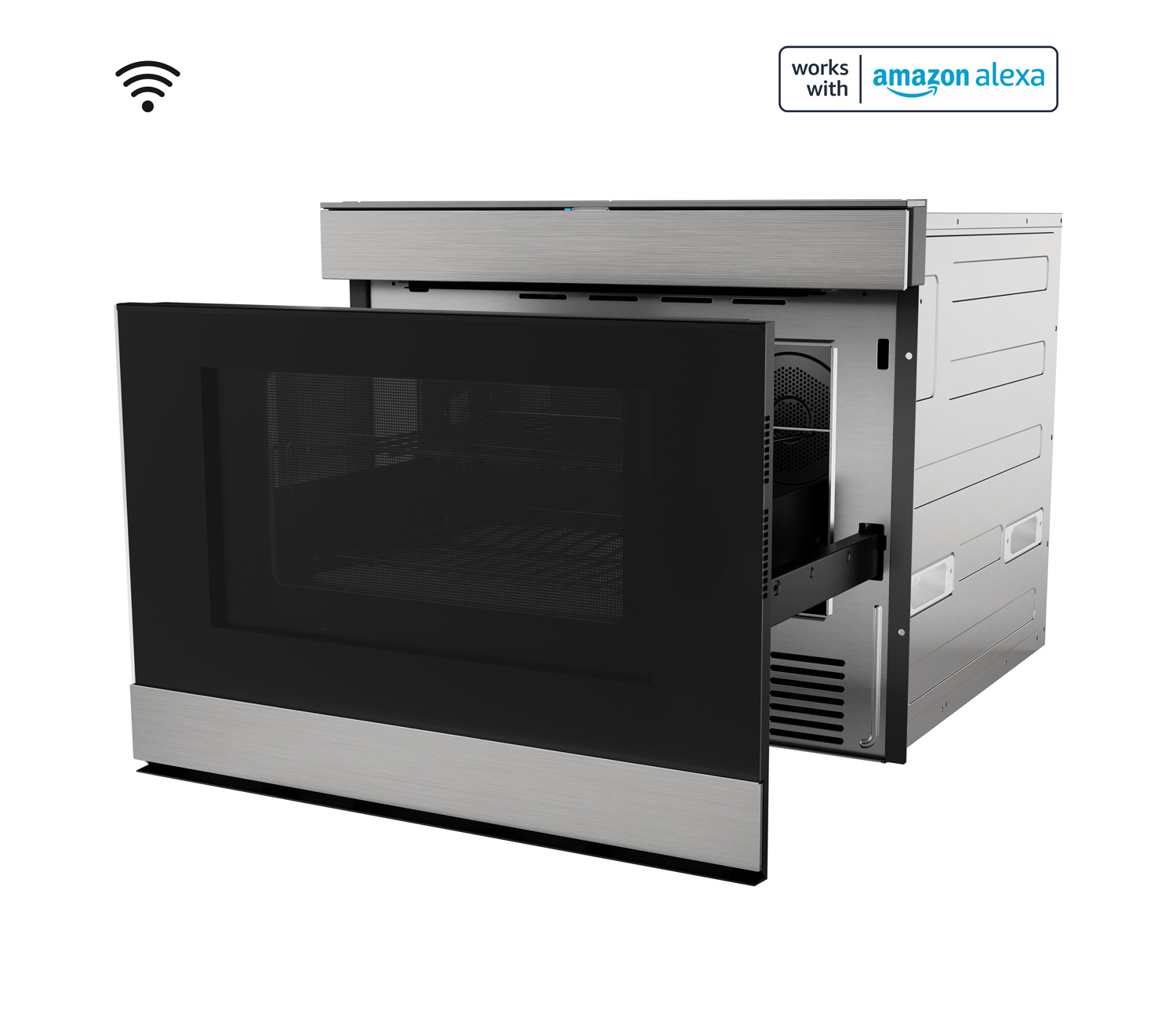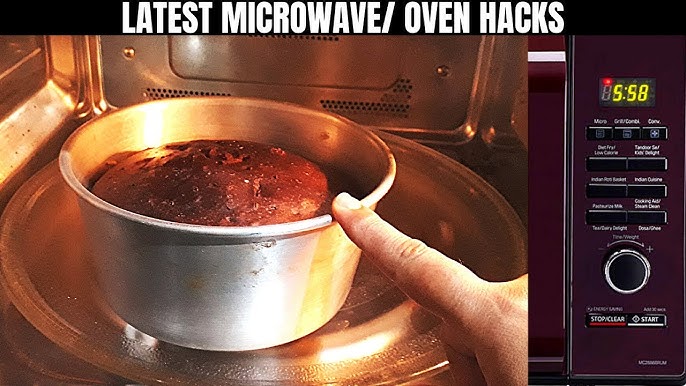What cookware can be used in a microwave convection oven? Choosing the right materials is essential to ensure safe and efficient cooking.
Microwave convection ovens are versatile kitchen appliances. They combine microwave and convection heating. This allows you to cook, bake, and roast food efficiently. But not all cookware is safe to use in them. Some materials can cause sparks or damage the oven.
Understanding which cookware is compatible can improve your cooking experience. It can also prevent accidents. In this guide, we will explore the best cookware options for your microwave convection oven. You will learn which materials are safe and which to avoid. This knowledge will help you make informed choices for your kitchen.
Introduction To Microwave Convection Ovens
Microwave convection ovens are versatile kitchen appliances. They combine the fast heating of microwaves with the even cooking of convection ovens. This combination allows for a wide range of cooking possibilities. But what cookware can be used in these ovens? This guide will help you understand the best options.
What Is A Microwave Convection Oven
A microwave convection oven is a kitchen device that merges two technologies. It uses microwave radiation to heat food quickly. At the same time, it employs a fan to circulate hot air, cooking food evenly. This dual functionality makes it a useful tool for many cooking tasks. You can bake, roast, and even grill with it.
Benefits Of Using A Microwave Convection Oven
Using a microwave convection oven offers many advantages.
- Speed: Microwave convection ovens cook food faster than traditional ovens.
- Versatility: These ovens can handle various cooking methods, including baking and grilling.
- Energy Efficiency: They use less energy compared to conventional ovens, saving on electricity bills.
- Compact Size: They are ideal for small kitchens or limited counter space.
These benefits make microwave convection ovens a popular choice for many households. They simplify cooking and enhance meal preparation.
Types Of Cookware For Microwave Convection Ovens
Microwave convection ovens offer versatility in cooking. Using the right cookware enhances this experience. Certain types of cookware work best with microwave convection ovens. Let’s explore two popular choices: glass and ceramic cookware.
Glass Cookware
Glass cookware is a great option for microwave convection ovens. It can withstand high temperatures. This makes it safe for convection cooking. Glass dishes distribute heat evenly. This helps cook food uniformly.
Clear glass allows you to monitor the cooking process. This reduces the risk of overcooking. It is also non-reactive. This means it won’t absorb flavors or odors from foods. Always ensure the glass is labeled microwave-safe.
Ceramic Cookware
Ceramic cookware is another excellent choice. It is durable and can handle high heat. This makes it perfect for microwave convection ovens. Ceramic dishes also distribute heat well. This ensures even cooking.
Many ceramic dishes come in attractive designs. This makes them perfect for serving food directly from the oven. Always check for a microwave-safe label. This ensures the ceramic can withstand microwave use.
Metal Cookware: Pros And Cons
Not all metal cookware is safe for microwave convection ovens. Understanding the pros and cons of using metal is key. This ensures both safety and optimal cooking results.
Safe Metal Options
Using the right metal cookware can enhance your cooking experience. Here are some safe metal options for microwave convection ovens:
- Stainless Steel
- Aluminum with non-stick coating
- Enamel-coated cookware
These materials can withstand high temperatures and offer durability. Ensure they are labeled as microwave-safe.
Potential Risks
Using the wrong metal cookware can pose potential risks:
- Electrical Sparks: Metals like aluminum foil can cause sparks.
- Uneven Heating: Metal can interfere with microwave waves, leading to uneven cooking.
- Fire Hazard: Thin metal containers can overheat and catch fire.
Always follow the manufacturer’s instructions. This helps to avoid these risks.
Silicone Bakeware In Microwave Convection Ovens
Silicone bakeware is a popular choice for microwave convection ovens. It offers flexibility, durability, and ease of use. This type of bakeware can handle high temperatures and cools down quickly. Let’s explore the advantages and usage tips for silicone bakeware in microwave convection ovens.
Advantages Of Silicone
Silicone bakeware has many benefits. It is lightweight and easy to handle. The non-stick surface makes cleaning simple. Food slides out without much effort. Silicone is also heat resistant, which means it can go from the oven to the freezer without damage. Additionally, it does not absorb odors or flavors from foods.
Usage Tips
Using silicone bakeware in a microwave convection oven is easy. Place the bakeware on a microwave-safe rack or tray. Ensure the bakeware is not too close to the oven walls. This allows air to circulate properly. Avoid using sharp utensils with silicone bakeware. They can damage the non-stick surface. Always check the manufacturer’s instructions for temperature limits. Most silicone bakeware can handle up to 428°F (220°C). For best results, grease the bakeware lightly before use. This helps to prevent sticking.
Plastic Cookware: What To Know
Using plastic cookware in a microwave convection oven can be confusing. Not all plastics are safe. Some can melt or release harmful chemicals. It is crucial to understand which plastics are safe and which ones to avoid.
Microwave-safe Plastics
Not all plastics are suitable for microwave use. Look for labels that say “microwave-safe”. These labels ensure that the plastic can handle high heat without melting.
The following types of plastics are generally considered safe for microwave use:
- Polypropylene (PP): Often used in food containers and is microwave-safe.
- Polycarbonate (PC): Used in some kitchenware, but be cautious of older items.
- Polyethylene Terephthalate (PET): Common in beverage bottles and some containers.
To check if a plastic item is microwave-safe, look for the microwave symbol. This symbol usually looks like a microwave or wavy lines.
Avoiding Harmful Plastics
Some plastics should never go in a microwave convection oven. These plastics can release harmful chemicals when heated.
Avoid using the following types of plastics in your microwave:
- Polystyrene (PS): Often found in disposable plates and cups. It can release styrene, a harmful chemical.
- Polyvinyl Chloride (PVC): Used in cling wrap and some containers. It can release dangerous dioxins.
- Melamine: Found in some dishware. It can break down and release harmful substances.
Do not use plastics that are not labeled as microwave-safe. Always check the labels before using plastic items in the microwave convection oven.
| Plastic Type | Safe for Microwave? |
|---|---|
| Polypropylene (PP) | Yes |
| Polycarbonate (PC) | Yes, but with caution |
| Polyethylene Terephthalate (PET) | Yes |
| Polystyrene (PS) | No |
| Polyvinyl Chloride (PVC) | No |
| Melamine | No |
Ensuring the safety of your cookware can protect your health. Always use microwave-safe plastics and avoid harmful ones.
Specialty Cookware Options
Specialty cookware options can enhance your microwave convection oven experience. These tools help you achieve better cooking results. They also save time and offer convenience. Let’s explore two popular specialty cookware options.
Microwave Crisper Pans
Microwave crisper pans are ideal for achieving crispy textures. They have a special coating that absorbs microwaves. This helps in browning and crisping the food. You can use them for pizzas, fries, and even bacon. They are easy to clean and durable.
Combination Cookware
Combination cookware is versatile and efficient. It is designed for both microwave and convection modes. You can use it to bake, roast, or grill. This cookware is often made of glass or ceramic. It distributes heat evenly for perfect cooking results. It is safe and convenient for everyday use.
Care And Maintenance Of Cookware
Care and maintenance of cookware are essential for ensuring longevity and safety. Proper upkeep not only preserves the quality of your cookware but also enhances cooking efficiency. Here are some practical tips to help you maintain your microwave convection oven cookware.
Cleaning Tips
Always clean your cookware after each use. Hand wash with mild soap and warm water. Avoid abrasive cleaners or steel wool, as they can scratch surfaces. For stubborn stains, soak the cookware in a mixture of baking soda and water.
Rinse thoroughly to remove any soap residue. Dry immediately with a soft cloth to prevent water spots. If using a dishwasher, check if the cookware is dishwasher-safe. Not all microwave convection oven cookware can withstand dishwasher cycles.
Storage Recommendations
Store your cookware in a cool, dry place. Stack pots and pans carefully to avoid scratches or dents. Use felt or fabric protectors between stacked items. This prevents damage and keeps surfaces looking new.
Hang utensils and lids on hooks to save space. Make sure the storage area is free from moisture. This helps prevent rust and prolongs the life of your cookware.

Credit: www.reddit.com
Expert Tips For Safe Cooking
Cooking with a microwave convection oven can be a delightful experience. But ensuring safety and efficiency is crucial. Here are expert tips for safe cooking to help you get the best results.
Preventing Damage
Choose microwave-safe cookware to avoid damage. Glass and ceramic dishes work well. Avoid metal containers as they can cause sparks. Ensure there are no cracks or damage in the cookware.
Plastic containers should be labeled microwave-safe. Avoid using plastic wrap directly on food. It can melt and cause contamination.
Maximizing Efficiency
Use shallow, round dishes to promote even cooking. They allow heat to circulate better. Avoid deep or narrow containers. They can lead to uneven heating.
Covering food helps retain moisture. Use a microwave-safe lid or microwave-safe plastic wrap. This also prevents splatters and keeps the oven clean.
Arrange food in a single layer if possible. This ensures even cooking and reduces cooking time. Stir or rotate food halfway through cooking for best results.
Summary Of Key Points
Glass and ceramic cookware perform well in microwave convection ovens. They are safe and evenly distribute heat. Metal pans, including aluminum and stainless steel, are suitable for convection mode. Avoid using them in microwave mode to prevent damage. Silicone bakeware is versatile and safe for both modes. It is flexible and easy to clean. Plastic containers should be microwave-safe and free of BPA. They are ideal for reheating but not for cooking at high temperatures.
Future Trends In Cookware
Innovations in cookware materials continue to emerge. Manufacturers are developing safer, more efficient options. Hybrid materials that combine the benefits of different types are becoming popular. They offer improved performance and durability. Eco-friendly cookware is also gaining traction. Sustainable materials and production methods are in demand. Consumers seek health-conscious and environmentally responsible products. Future trends will likely focus on these priorities. “`

Credit: stahlkitchens.com

Credit: shop.sharpusa.com
Frequently Asked Questions
What Cookware Is Safe For Microwave Convection Ovens?
Use microwave-safe glass, ceramics, and some plastics. Avoid metal or aluminum foil. Check manufacturer’s guidelines for best results.
Can You Use Metal Pans In A Convection Microwave?
No, metal pans are not safe. They can cause sparks and damage the microwave. Use microwave-safe cookware instead.
Are Silicone Bakeware Safe For Convection Microwaves?
Yes, silicone bakeware is safe. It can withstand high temperatures and doesn’t interfere with microwave energy.
Can You Use Non-stick Pans In Microwave Convection?
Yes, but check for microwave-safe labeling. Avoid high temperatures to prevent damage to non-stick coatings.
Conclusion And Final Thoughts
What cookware can be used in a microwave convection oven? Now that you know the best options, choosing the right materials like glass, ceramic, and certain metals will ensure safe and efficient cooking.
Always check manufacturer guidelines to avoid damage and maximize performance. With the right cookware, you can enjoy versatile and hassle-free cooking in your microwave convection oven.
